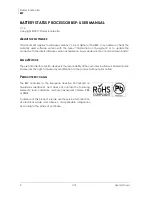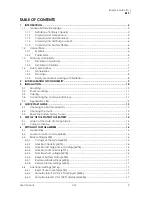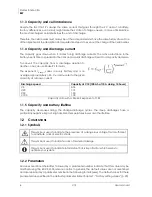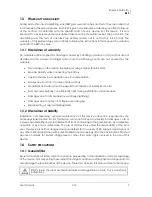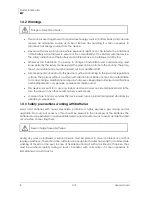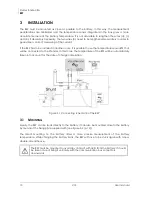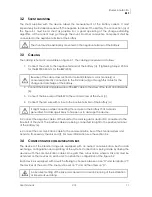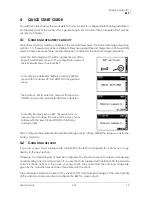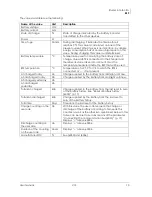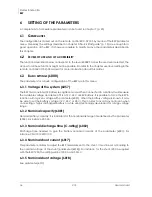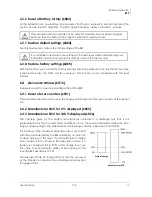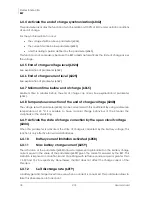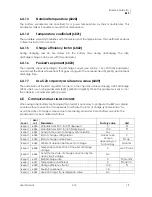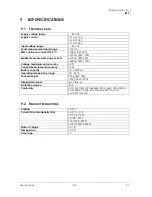
Studer Innotec SA
BSP
User manual
V1.3
13
4
QUICK START GUIDE
You will find in this chapter the procedure to follow in order to configure the BSP during installation.
For the major part of the systems this is good enough. For a full list of the parameters that can be
set, refer to chapter 7.
4.1
C
HOOSING THE BATTERY CAPACITY
The battery capacity must be configured. The manufacturer gives it at various discharge times (see
section 1.1.1). If several capacities at different times are supplied, the discharge time in 20 hours (C20)
must be chosen because these are the reference conditions for the state of charge calculation.
From the initial display of the RCC and by means of the
keys UP and DOWN, move to the configuration menu of
the BSP parameters, then push SET.
To modify the parameter "Battery Capacity" {6001},
move with the arrows UP and DOWN to the general
menu.
Then push on SET to enter the menu. With the arrow
DOWN, move to the parameter "Battery Capacity".
To modify its value push on SET. The value turns in
reverse video. Change the value for the one of your
battery with the keys UP and DOWN. Confirm by
pushing on SET.
Then, configure the parameter "Nominal Discharge Time(C-rating)" {6002} the same way as for the
battery capacity.
4.2
C
HOOSING THE SHUNT
If you are using a shunt supplied with the BSP-500, the BSP is configured for it and you can go
directly to the next section.
Otherwise, the measuring shunt must be configured. The shunts are meant to supply a measuring
nominal voltage at a nominal current. If you use the shunt supplied with the BSP-1200, the nominal
current is 1200A at 50 mV. If you use your own shunt, the current and the nominal voltage are
given by the manufacturer and are often printed on the shunt.
The parameters "Nominal Current of the shunt" {6017} and "Nominal Voltage of the shunt" {6018}
of the advanced menu enable to configure the BSP for a given shunt.


